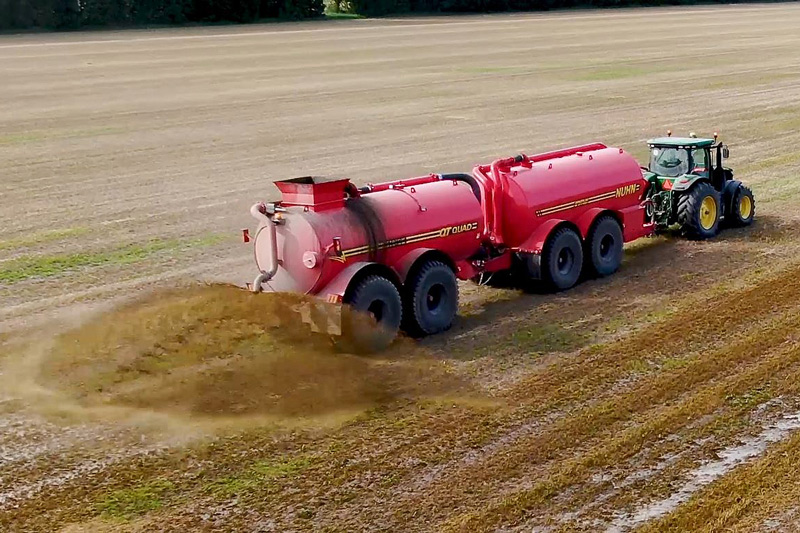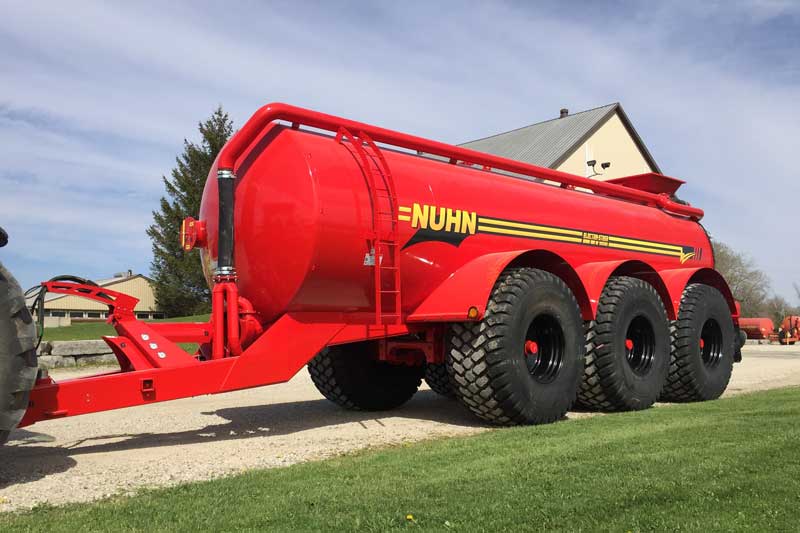When it comes to sustainable farming practices, diller manure tanks have become a game-changer for modern agriculture. These innovative solutions are revolutionizing the way farmers manage waste while enhancing soil fertility. But what exactly are diller manure tanks, and why should you care? Let’s dive into the world of manure management and uncover the secrets behind these remarkable systems.
Picture this: a farmer standing in a field, scratching his head, wondering how to turn waste into gold. Enter diller manure tanks. These tanks aren’t just storage containers; they’re powerful tools that turn manure into nutrient-rich fertilizer. In today’s eco-conscious world, managing agricultural waste efficiently is crucial, and these tanks are leading the charge.
Whether you’re a seasoned farmer, an aspiring agriculturist, or simply curious about sustainable practices, this article has got you covered. We’ll explore everything from the basics of diller manure tanks to advanced techniques for maximizing their potential. So, buckle up and get ready to learn how these tanks can transform your farming operations!
Read also:Emma Anthurium A Comprehensive Guide To Cultivating And Caring For This Exquisite Tropical Plant
What Are Diller Manure Tanks?
Diller manure tanks are specially designed storage systems used primarily in agriculture to manage livestock waste. These tanks are engineered to store and treat manure, turning it into valuable fertilizer. Unlike traditional waste management methods, diller tanks offer a more efficient and environmentally friendly solution. They’re built to withstand harsh weather conditions and are designed to last for years, making them a reliable choice for farmers.
Here’s why diller manure tanks are a farmer’s best friend:
- Efficient waste storage and treatment
- Enhanced soil fertility through nutrient-rich fertilizer
- Reduced environmental impact
- Cost-effective and durable
So, how exactly do these tanks work? Let’s break it down in the next section.
How Do Diller Manure Tanks Work?
The magic of diller manure tanks lies in their design and functionality. These tanks are constructed with advanced materials that ensure durability and efficiency. The process begins with the collection of manure from livestock, which is then transported to the tank. Inside the tank, the manure undergoes a natural decomposition process, breaking down into valuable nutrients that can be used as fertilizer.
But wait, there’s more! Modern diller tanks come equipped with features like agitation systems and aeration, which help speed up the decomposition process. This not only improves the quality of the fertilizer but also reduces odors and harmful emissions. It’s a win-win for farmers and the environment.
Key Features of Diller Manure Tanks
Now that we’ve covered the basics, let’s take a closer look at some of the key features that make diller manure tanks stand out:
Read also:Sean Connery James Bond The Timeless Icon Of 007
- Durable Construction: Built to last, these tanks are made from high-quality materials that can withstand the test of time.
- Efficient Decomposition: Advanced systems ensure that manure is broken down quickly and effectively.
- Environmental Benefits: By reducing harmful emissions, these tanks contribute to a cleaner planet.
These features make diller manure tanks a smart investment for any farmer looking to enhance their operations while minimizing their environmental footprint.
Why Choose Diller Manure Tanks?
With so many waste management options available, you might be wondering why diller manure tanks are the way to go. Well, here’s the scoop: these tanks offer a unique combination of efficiency, sustainability, and cost-effectiveness. They’re not just about storing waste; they’re about transforming it into something valuable.
Let’s talk numbers. According to a recent study, farms that use diller manure tanks report a significant increase in soil fertility and crop yields. This translates to better profits for farmers and healthier produce for consumers. Plus, by reducing waste and emissions, these tanks help protect the environment, making them a win-win for everyone involved.
Benefits of Using Diller Manure Tanks
Here’s a quick rundown of the benefits you can expect from using diller manure tanks:
- Increased soil fertility
- Higher crop yields
- Reduced waste and emissions
- Cost savings over time
These benefits make diller manure tanks a no-brainer for any farmer looking to improve their operations.
Installation and Maintenance of Diller Manure Tanks
Installing a diller manure tank might sound intimidating, but it’s actually a straightforward process. Most manufacturers offer comprehensive installation guides, and many even provide professional installation services. Once installed, these tanks require minimal maintenance, making them a hassle-free addition to any farm.
Maintenance tips include regular inspections, proper cleaning, and ensuring that all systems are functioning correctly. By following these simple steps, you can ensure that your diller manure tank continues to perform at its best for years to come.
Cost Considerations
One of the biggest concerns farmers have when considering diller manure tanks is cost. While the initial investment might seem steep, the long-term benefits far outweigh the expenses. Think of it as an investment in your farm’s future. Plus, many governments offer subsidies and incentives for farmers who adopt sustainable practices, making these tanks even more affordable.
Environmental Impact of Diller Manure Tanks
In today’s world, where environmental concerns are at the forefront, diller manure tanks offer a sustainable solution for waste management. By reducing harmful emissions and turning waste into valuable fertilizer, these tanks play a crucial role in protecting our planet.
Studies show that farms using diller manure tanks have significantly lower levels of greenhouse gas emissions compared to those using traditional waste management methods. This not only benefits the environment but also enhances the reputation of farmers who adopt these eco-friendly practices.
Contributing to a Greener Future
Here’s how diller manure tanks contribute to a greener future:
- Reduced greenhouse gas emissions
- Improved soil health
- Conservation of natural resources
By choosing diller manure tanks, farmers are taking a step towards a more sustainable and environmentally friendly future.
Case Studies: Success Stories with Diller Manure Tanks
Let’s take a look at some real-world examples of farms that have successfully implemented diller manure tanks. One such farm is Green Acres, a dairy operation in the Midwest. After installing diller tanks, they reported a 20% increase in crop yields and a significant reduction in waste-related issues. Another farm, Blue Sky Ranch, saw similar results, with improved soil fertility and increased profitability.
These success stories highlight the effectiveness of diller manure tanks in transforming farming operations. By learning from these examples, you can better understand how these tanks can benefit your own farm.
Lessons Learned from Real-World Applications
Here are some key takeaways from these case studies:
- Proper installation and maintenance are crucial
- Increased soil fertility leads to better crop yields
- Environmental benefits enhance farm reputation
These lessons can guide you in making the most of your diller manure tank investment.
Common Challenges and Solutions
While diller manure tanks offer numerous benefits, they’re not without their challenges. Common issues include system malfunctions, improper maintenance, and initial cost concerns. However, with the right approach, these challenges can be easily overcome.
Solutions include regular maintenance checks, proper training for farm staff, and exploring financial assistance programs. By addressing these challenges head-on, you can ensure that your diller manure tank operates smoothly and efficiently.
Tips for Overcoming Challenges
Here are some tips to help you overcome common challenges:
- Regular maintenance checks
- Staff training and education
- Exploring financial assistance options
By following these tips, you can minimize potential issues and maximize the benefits of your diller manure tank.
Future Trends in Diller Manure Tanks
As technology continues to evolve, so do the capabilities of diller manure tanks. Innovations in design, materials, and functionality are making these tanks more efficient and effective than ever before. From smart monitoring systems to advanced decomposition technologies, the future of diller manure tanks looks bright.
Stay ahead of the curve by keeping an eye on these emerging trends. By adopting the latest technologies, you can ensure that your farm remains at the forefront of sustainable agriculture.
Staying Ahead of the Curve
Here’s how you can stay ahead of the curve:
- Invest in the latest technologies
- Stay informed about industry trends
- Continuously improve your operations
By embracing these trends, you can future-proof your farm and ensure long-term success.
Conclusion
In conclusion, diller manure tanks are a game-changer for modern agriculture. They offer a sustainable, cost-effective, and efficient solution for managing livestock waste while enhancing soil fertility and crop yields. By choosing diller manure tanks, farmers can contribute to a cleaner, greener planet while improving their operations.
So, what are you waiting for? Take the first step towards a more sustainable future by investing in a diller manure tank. Share your thoughts and experiences in the comments below, and don’t forget to check out our other articles for more tips and insights on sustainable farming practices. Together, we can make a difference!
Table of Contents
- What Are Diller Manure Tanks?
- How Do Diller Manure Tanks Work?
- Why Choose Diller Manure Tanks?
- Installation and Maintenance of Diller Manure Tanks
- Environmental Impact of Diller Manure Tanks
- Case Studies: Success Stories with Diller Manure Tanks
- Common Challenges and Solutions
- Future Trends in Diller Manure Tanks
- Conclusion


